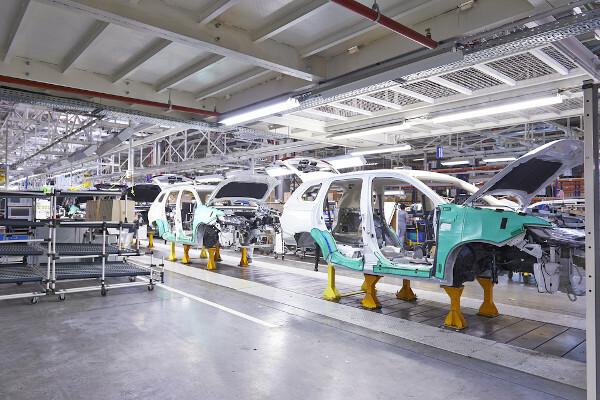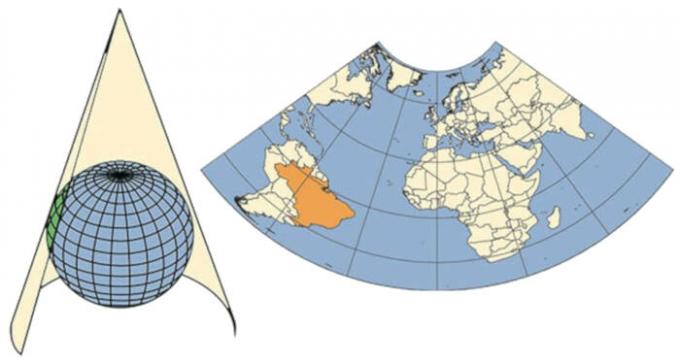O Fordism it was a industrial production model used widely in the United States and revolutionized automobile production, being adapted to other industries over the years. As the name implies, it was a model created by the creator of Ford industries, Henry Ford.
Ford perfected a practice that already existed in Europe, developed by Frederick Taylor, and adapted it to its automobile industries. With adaptations, such as the Assembly line and the standardization of manufactured products, productivity was high, and production time was very low, which resulted in a successful model at the beginning of its implementation.
Read too: Cultural industry - the industrial perspective implemented in the scope of artistic production
Origin of Fordism
At the end of the 19th century, the Second Industrial Revolution it considerably increased the production of goods and, consequently, the number of industries around the world. From that moment on, innovations were created to meet such demand, in order to further increase production in a shorter period of time.
O first to produce an industrial production model that achieved these goals was Frederick Taylor, who developed a system that based production on the time of workers' movement, Taylorism. Taylor devised a mechanism that adapted the worker to the machine's pace, so fewer interruptions happened, there was less waste and more productivity.
However, in the following century, in 1909, the entrepreneur Henry Ford improved Taylor's ideas and he adapted them for the automotive industry, Ford Motor Company, located in Detroit, USA. His ideas revolutionized the way industry, in general, produced its goods.
Do not stop now... There's more after the advertising ;)
Before Ford, with Taylor's ideas, factories adapted machines to employees, but that didn't make production as high as industrialists imagined. Ford, noting this issue, introduced several techniques to provide fast and cheap production.
Also access: Marxism - critical theory of capitalism and its labor relations
Characteristics of Fordism
By adapting Taylor's ideas, Ford removed from manufacturing all the components that could be handcrafted, thus implementing a total automation of industrial processes. For this, some features need to be explained in order to improve the understanding of this model.
Production standardization: Henry Ford set standards in his cars, the T models, by introducing machines that cut all the vehicle's components and molded them, reducing possible human errors.
Conveyor and assembly line: among Ford's main innovations, one of the most significant in terms of production was the assembly line, which came with a conveyor belt that took the product to be worked on for the worker. In this way, the worker remained stationary in his position, waiting for his demand. With this, the workers were submitted to mechanized and relatively simple movements. It was this treadmill that controlled the production time in the industry. The worker was stopped while the car moved to the end of production, the finishing.

Decrease in production time: By standardizing the models and assigning repetitive motions to its employees, the Fordist model vastly reduced the production time of an automobile. At the time, it is estimated that, before Ford, a vehicle took, on average, 500 minutes to be ready. At Ford factories, this time dropped to 2 minutes.
Strict division of tasks: in the treadmill process, each worker performed a specific function, which increased productivity and lowered costs.
Cheaper products and mass production: with all the features mentioned above, Ford vehicles could be sold at affordable prices, as costs were low. Thus, the high productivity with the assembly line (treadmill) and specific functions for each worker popularized the vehicles, making the acquisition of the T model common.
See too: Contemporary slave labor: concept, characteristics, where it occurs
Decline of Fordism
Fordist production was a success and, in just over two decades, the Model T was the most common in the United States, being exported to Europe, mainly after the First World War.
However, the Ford model was accumulating large stocks, due to cheap and mass production. This item brought an accumulation of goods, and there was a crisis of overproduction.
This overproduction occurred because a large part of the American products were sold to the Europe after the First World War (1914-18). However, during the 1920s, Europe began to restructure, buying less from the United States. However, US industries continued to accelerate production, which made increase stocks, as sales were not like before.
These situations, added to other factors, triggered an unprecedented economic crisis, the 1929 crisis.
Fordism and Taylorism
Before Henry Ford, another businessman had already thought of a production model that would meet the demand at the time (which was increasing more and more) and would be practical. Frederick Wislow Taylor developed a model in which the knowledge of the production process was unique to one person - in this case, a manager. The worker did not need to know the reason for his role, but just execute it. It was a period of low technical qualification, in which it was up to the worker only to carry out his tasks and at an accelerated pace to maximize profits. To learn more about, read: Taylorism.
See the table below, which shows a comparison between the two models:
production model |
production rate |
division of tasks |
Quality control |
Fordism |
Assembly line and moving walks. |
Serial and specialized work. |
Made at the end of production, on the last stage of the belt. |
Taylorism |
Production controlled by worker time (scheduled); repetitive movements. |
Rigid division of tasks, with large alienation of the worker. |
Introduction of quality inspection in the final stages of production. |
Fordism and Toyotism
With the overproduction crisis in the mid-1930s-40s, another industrial production model emerged to ease the crisis and as an alternative to models that did not bring great benefits to workers.
While in Taylorism the worker was suited to the machine, having its production timed and programmed to act in a repetitive, Fordism did the opposite, adapting the machines to the worker, with the innovation of the conveyor belt, of work skilled. However, in both models, the worker was undervalued, received low wages and, due to repetitive movements, had their health impaired.
With that, the Japanese businessman Eiji Toyoda, founder of the Toyota car company, visited Ford's factories in the 1950s and was impressed by the enormous facilities. These large facilities were necessary due to large inventories and large-scale production.
Upon returning to Japan, Eiji Toyoda decided adapt the Fordist model to the social and geographic reality of Japan, a country with physical limits, such as a mountainous relief, and territorial limits, as it is a country of small extension, in addition to being located close to the meeting of tectonic plates. Thus was born the industrial model that gained strength in the 1970s onwards, the toyotism.

This model had some peculiar characteristics, such as production adapted to direct sales, which was called just in time. This expression can be literally translated as “on time”, which means that the factory's production would be adequate to market demands. Thus, there would be no need for large stocks, much less grandiose spaces for the storage of goods.
Another feature of this model was the high use of technology and knowledge by the workers. To put into practice the just in time, the Japanese developed techniques that changed the rhythm of the machines during the production of a vehicle, which demanded high technological use and flexibilization of the workers' functions.
Over the years, Toyotism is no longer a unique Toyota model, being used in other automotive industries and, later, in other segments. The rise of this model coincided with the new technologies that emerged during the Third Industrial Revolution.
Let's understand the main differences between Fordism and Toyotism.
production model |
production rate |
division of tasks |
Quality control |
Fordism |
Assembly line and moving walks. |
Serial and specialized work. |
Made at the end of production, on the last stage of the belt. |
Toyotism |
Immediate sale, without waste, the just in time. |
Little division of tasks, and the worker knows the stages of production. |
High quality control, at all stages of the process, with technology and knowledge. |
solved exercises
Question 1 (ESPM SP/2017)
Entrepreneur Henry Ford (1863-1947) was both a genius and a man full of contradictions: he opened the doors of his factories to men from all over the world. He was able to double the minimum wage in his factory, drawing the fury of his rivals, but he put a henchman to lead, based on fear, his industry; he hired a ship to take pacifists to Europe to try to end World War I, but he displayed an anti-Semitism that earned him praise from Adolf Hitler.
(Richard Snow. Ford – The man who transformed consumption and invented the Modern Era)
The text deals with Henry Ford, businessman responsible for Fordism, a term that can be defined as:
a) production system that consists of the division of labor and specialization of the worker in a single task;
b) an industrial process in which there is series production, assembly lines, mass production;
c) an industrial process that adopts the use of small and high rates of outsourcing;
d) a production process characterized by a very high degree of computerization and automation, a strong presence of labor unions and a highly qualified workforce;
e) production management system that determines that nothing must be produced, transported or purchased before the right time.
Resolution:
Alternative B. This alternative brings three characteristics implemented by Henry Ford in his factory, in the beginning of the 20th century: production in series, assembly line (with conveyor belts) and mass production, which reduced costs and standardized the consumption.
Question 2 - Since the emergence of the Industrial Revolution, several entrepreneurs and industrialists have focused their studies and projects to improve the techniques that emerged at that time, with the objective of taking advantage of the production time, the worker, or even maximizing the profits. Therefore, mark the alternative that contains, respectively, the industrial production model that elaborated a rigid division of labor and which improved production, employing technology and knowledge.
a) Fordism and Taylorism
b) Toyotism and Fordism
c) Volvisism and Toyotism
d) Taylorism and Fordism
e) Taylorism and Toyotism
Resolution:
Alternative E. Taylorism implemented a rigid division of labor by adapting every movement of the worker to the machine. In Toyotism, technology was present to innovate production and adapt the model to Japanese geography.
[1] Image Credit: Alexander Davidyuk / Shutterstock
By Attila Matthias
Geography teacher



